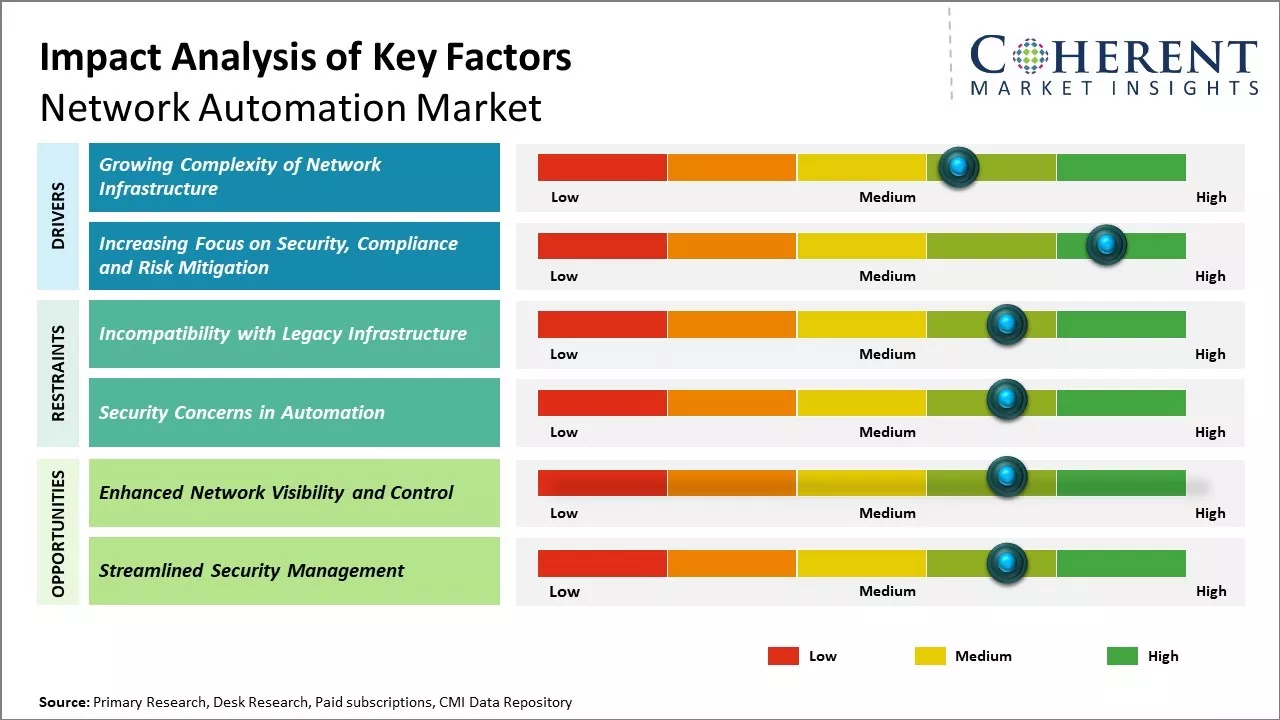The network automation market is estimated to be valued at USD 17.87 Billion in 2025 and is expected to reach USD 86.21 Billion by 2032, growing at a compound annual growth rate (CAGR) of 25% from 2025 to 2032.

To learn more about this report, Request sample copy
The growing complexity of modern networks is driving the increased demand for network automation solutions. With rise in the remote work culture and digital transformation of enterprises, there is a need to streamline network operations and ensure optimum performance. Additionally, the shortage of networking skills is compelling organizations to adopt advanced automation tools that can simplify and optimize routine network tasks. The growing adoption of cloud, IoT, and 5G technologies is also creating the need for highly scalable and self-driving networks. This is expected to further fuel the adoption of network automation platforms and solutions in the coming years.
Drivers of the Market:
Growing Complexity of Network Infrastructure
With the rapid growth of digital technologies and connectivity, network infrastructures have become massively large, complex, and diverse in today's world. Almost everything and everyone is now connected over various types of networks and this trend of hyperconnectivity is expected to accelerate further with emerging technologies like IoT, 5G, and edge computing. However, scaling and managing these exponentially growing networks has become a herculean task for organizations. Traditional manual methods of network administration are unable to handle configurations, updates, and changes across thousands of devices and locations in real-time. Even small human errors can cause major disruptions. Moreover, as networking environments incorporate multiple hybrid cloud platforms, diverse operating systems, and a plethora of new devices, the complexity is rising manifold. This complexity reduces visibility, impacts compliance and security, and increases the risk of outages. Network automation solutions are helping organizations overcome these challenges by enabling centralized, programmable, and intelligent management of infrastructure at a large scale. Through continuous monitoring, auto-remediation of failures and standardized configurations, these solutions are improving reliability, agility and efficiency of networks while reducing manual intervention and costs. As networks continue expanding in size, diversity and business criticality, automated management will become an inevitable requirement for enterprises to stay ahead of this growing complexity.
For instance, in February 2023, Tech Mahindra utilized the netOps.ai network automation platform to enhance network operations efficiency for Telefónica Germany. Additionally, by updating Telefonica's Operations Support Systems (OSS) stack, Tech Mahindra assisted Telefonica in accelerating its transition to autonomous networks. The adoption of netOps.ai technology, automating the end-to-end Network Lifecycle, marked a significant improvement in operational KPIs through its "Continuous Insights & Intelligence (CI2F)" methodology.
Joining thousands of companies around the world committed to making the Excellent Business Solutions.
View All Our Clients